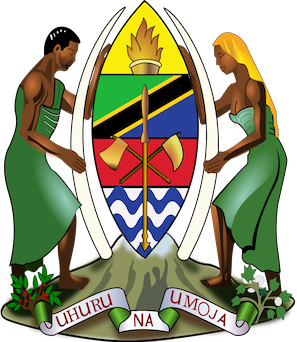Tanzania announces $421m project to strengthen Port of Dar es Salaam infrastructure
September 4, 2017On July 2 President John Magufuli unveiled the Dar es Salaam Maritime Gateway Project (DSMGP), which aims to overhaul Port of Dar es Salaam’s infrastructure by 2023. The project, which according to the World Bank will cost approximately $421m, will see the construction of a new multi-purpose berth at Gerezani Creek, dredging of the port’s entrance channel, and intermodal improvements to both rail and road linkages. The 11-berth port, which handled 13.8m tonnes of cargo last year, is expected to see its handling capacity more than double to 28m tonnes per year by 2020 as a result of the upgrades, while berth wait times will be reduced from 80 hours to 30.
The project is being financed in part by the World Bank, which has provided roughly $350m in loans and grants, while the bulk of the remainder – approximately $70m – is being provided by the Tanzania Ports Authority (TPA). The UK’s Department for International Development has also put forward grant assistance. Increased port throughput makes expansion a priority The need for the improvements is clear, with demand steadily increasing. The Port of Dar es Salaam has seen rising traffic over the past five years: between 2011 and 2016 throughput at the port jumped by 3.4m tonnes annually.
The pressure the increased traffic puts on the port’s infrastructure and intermodal connections is particularly notable, given that it currently handles roughly 95% of Tanzania’s external trade. Dar es Salaam’s capacity far outstrips that of the country’s next two largest ports, Tanga and Mtwara, which combined handle around 1m tonnes of traffic annually. In order to improve the Port of Dar es Salaam’s operational efficiency, donor-funded trade initiative TradeMark East Africa is providing the TPA with technical support in the rehabilitation of access roads to help reduce traffic congestion. On top of the expanded capacity, gains in efficiency – such as reduced wait times – will also have a significant impact: a World Bank report in 2014 found that inefficiencies at the port cost Tanzania and neighbouring countries up to $2.8bn in lost revenues annually. Tanzania partners with international players to achieve infrastructure goals The implementation of the DSMGP is key to helping Tanzania achieve the targets of its long-term Development Vision 2025 strategy, which looks to transform the country into a middle-income and semi-industrialised nation. Additional projects have also been launched to improve the capacity and efficiency of Tanzania’s biggest port, with the government signing a $154m contract with state-run China Harbour Engineering Company (CHEC) in June to construct a roll-on/roll-off terminal and deepen and strengthen seven berths.
There have also been other programmes aimed at reducing bottlenecks, including the 2014 launch of the Tanzania Customs Integrated System, an automated Customs processing system that has reduced import clearance times from nine days to less than one, and the prime minister’s directive in May this year to ensure 24/7 operations at the port, which is helping to reduce dwell times. The expansion of the Port of Dar es Salaam will also help to maintain its competitiveness as it looks to increase its share of regional trade. At present, the port acts as a gateway to neighbouring countries such as Zambia, Rwanda, Malawi, Burundi, Uganda and the Democratic Republic of the Congo, with roughly 45% of total throughput bound for landlocked economies. However, a number of other major facilities on the Indian Ocean, including South Africa’s Durban and Kenya’s Mombasa ports – both of which similarly cater to neighbouring markets – are also undergoing expansion programmes, which makes the urgency of Tanzania’s maritime investments all the more crucial.
New freight rail project aims to improve transport links in-country As a result, the TPA is also looking to improve infrastructure further inland. In late July it announced plans to build a dry port in the country’s western Kigoma region. Located by Lake Tanganyika, the facility will serve the Great Lakes region, including Uganda, Burundi, Rwanda, the DRC and Zambia, and will be linked to the Port of Dar es Salaam by a new 2500-km standard-gauge railway. The first phase of the rail link, a 205-km stretch between Dar es Salaam and Morogoro, is scheduled for completion by October 2019. Turkey’s Yapı Merkezi and Portugal’s Mota-Engil are constructing the first phase of the project. The line will carry an estimated 17m tonnes of freight per year, and will include a stop at the dry port at Ruvu in the south-east of the country.
Source: Oxford Business Group English (United Kingdom)
English (United Kingdom)  Swahili (East Africa)
Swahili (East Africa)  Français (France)
Français (France) 

